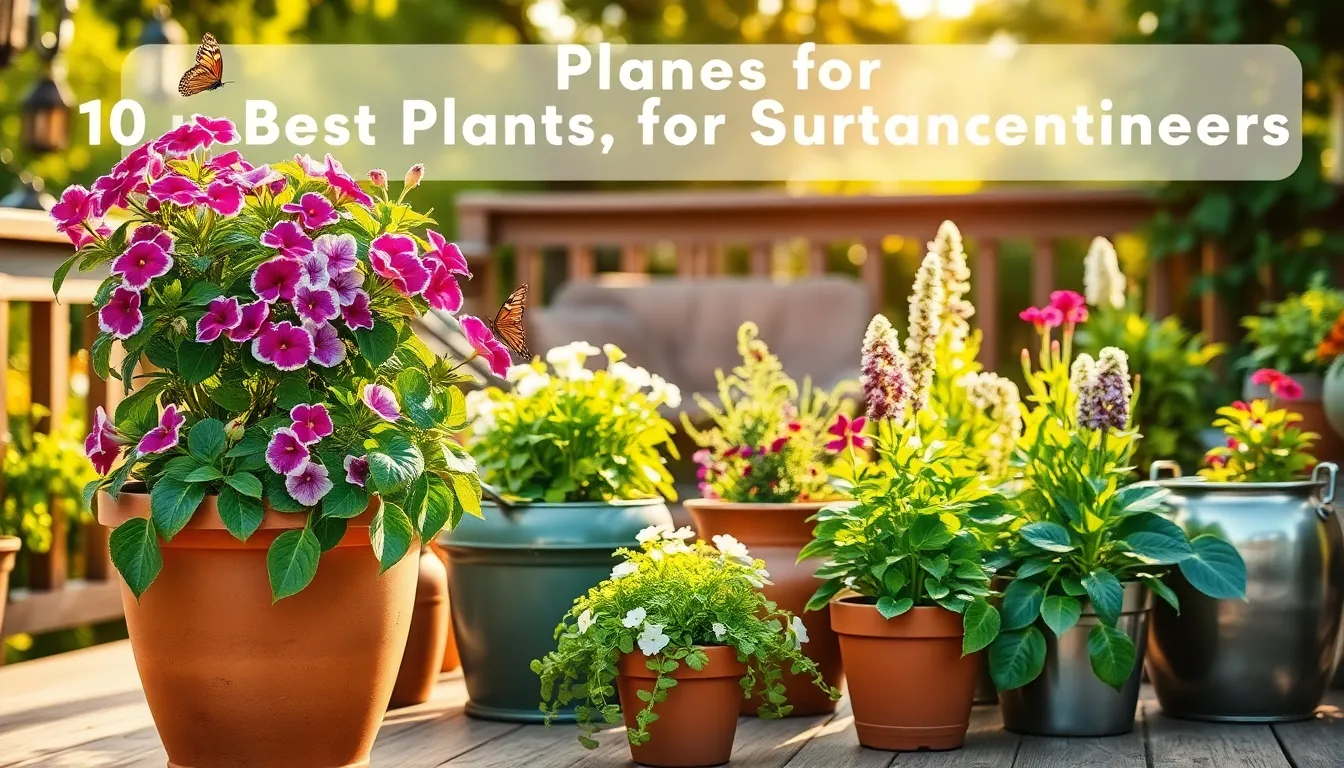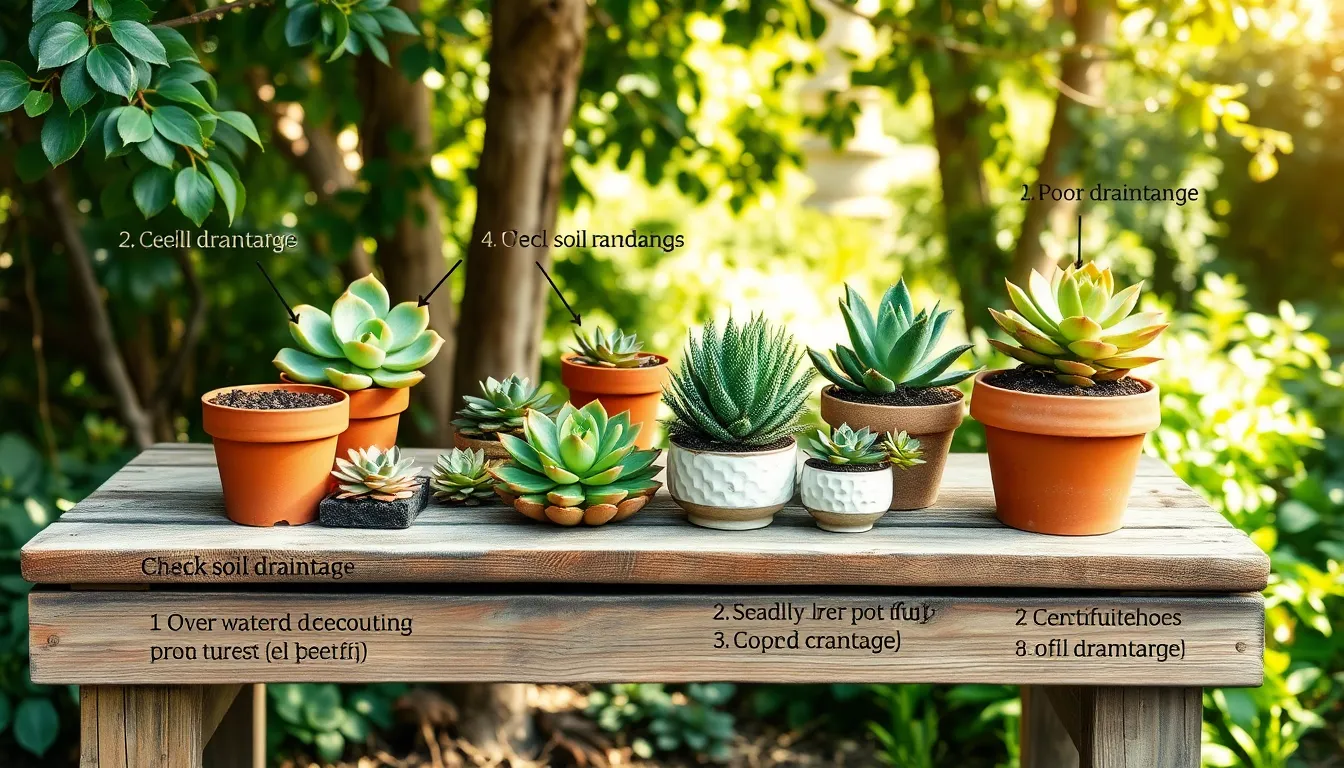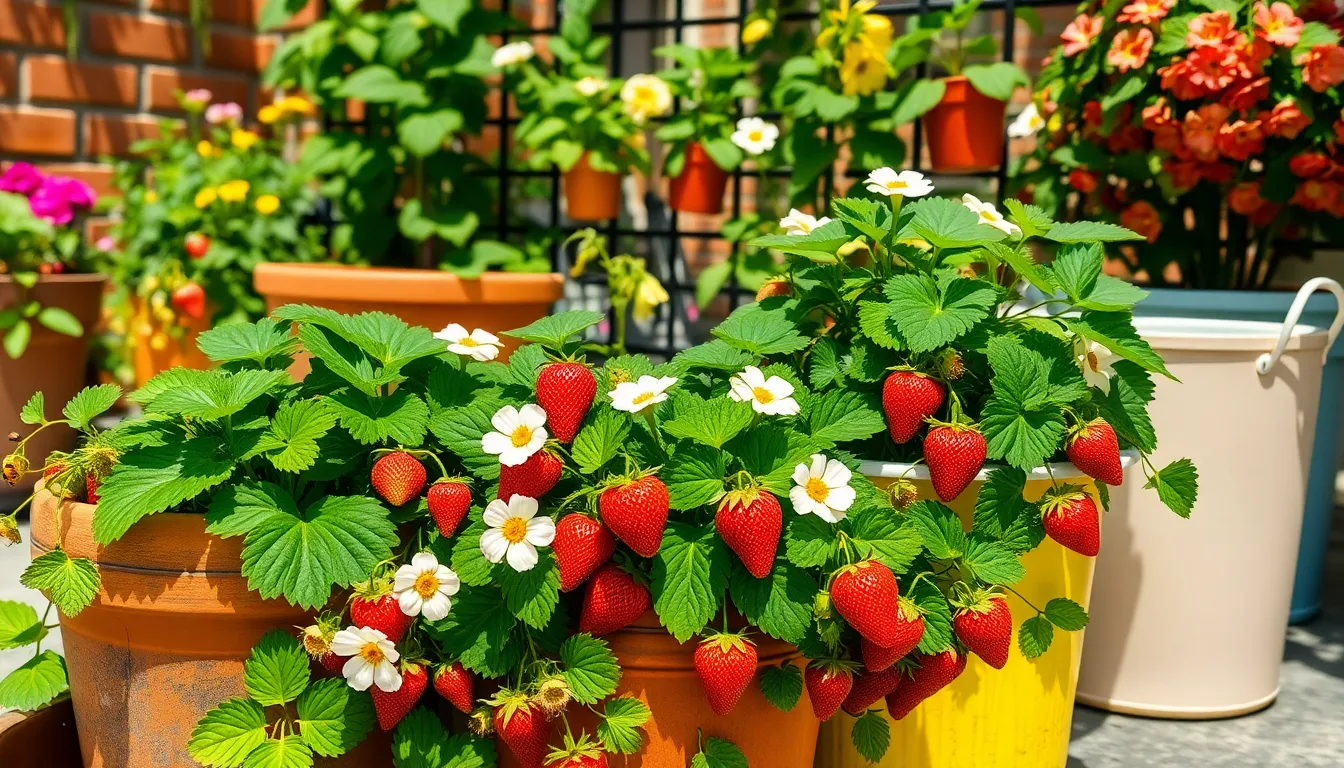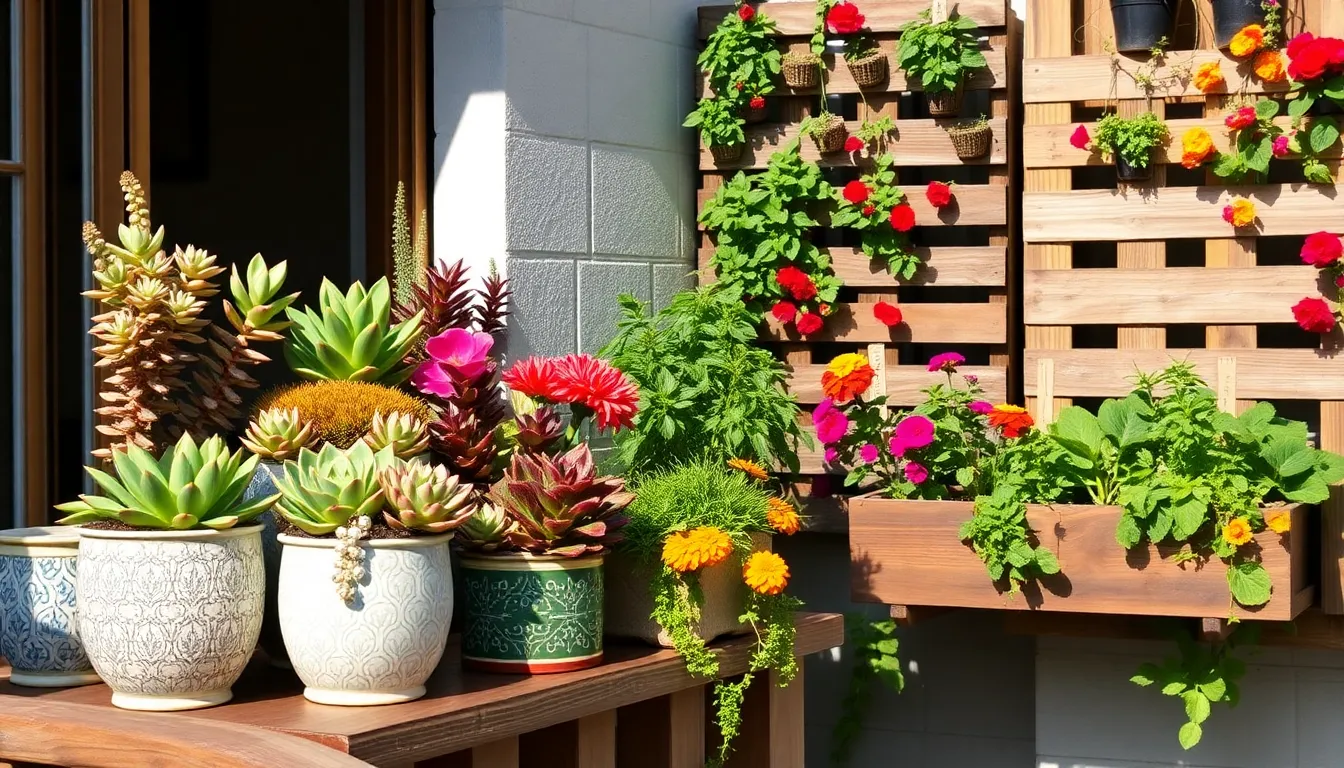Gardening enthusiasts, whether you’re just starting to explore the joys of nurturing plants or you’re a seasoned green thumb, rejoice! The beauty of outdoor container gardening lies in its versatility and the splash of life it brings to any space, big or small. Imagine transforming your patio, balcony, or doorstep into a vibrant oasis with the help of our guide, “10 Best Plants for Outdoor Containers.” This carefully curated list is designed to inspire confidence, ensuring that both beginners and experienced gardeners can achieve stunning results with ease.
The value of this guide goes beyond aesthetics; it offers practical benefits that will enhance your gardening experience. With our expert recommendations, you’ll discover plants that are not only visually striking but also resilient and easy to care for. Dive into the rewarding world of container gardening and experience the satisfaction that comes from watching your plants thrive. Let this guide be your companion in creating a flourishing garden, where each plant stands as a testament to your growing skills and passion for the natural world.
Dwarf Lemon Tree (Compact Citrus Delight)
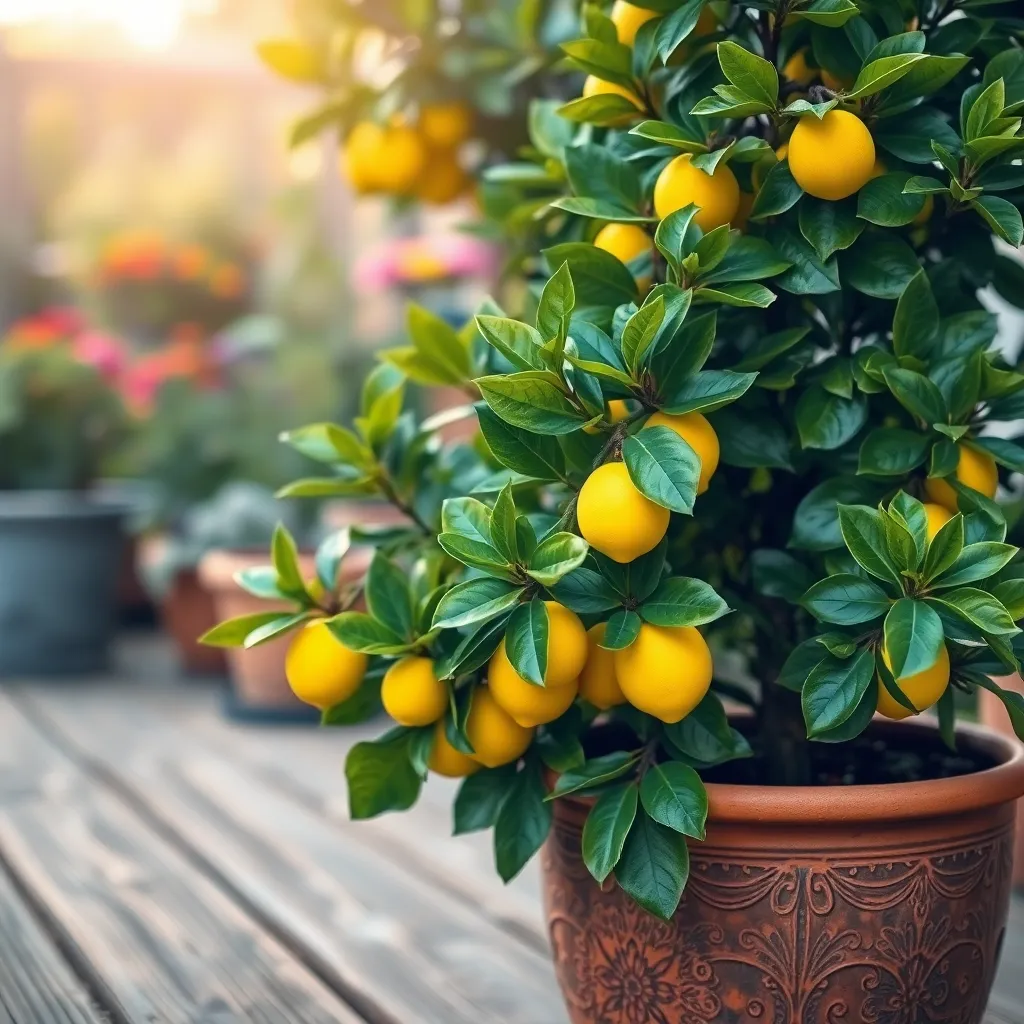
Dwarf lemon trees, often referred to as “Compact Citrus Delight,” are perfect for container gardening, offering fruit and fragrance in limited spaces. These small but mighty trees thrive in containers, making them ideal for patios, balconies, or any sunny spot that needs a touch of greenery.
To ensure your dwarf lemon tree flourishes, plant it in a pot with drainage holes and use a well-draining soil mix, such as a blend of potting soil and sand or perlite. While they prefer full sun, providing about 8 hours of direct sunlight daily, they’ll tolerate partial shade if necessary.
Water your lemon tree deeply but infrequently, allowing the top inch of soil to dry out between waterings to prevent root rot. During the growing season, typically spring and summer, it’s beneficial to feed your tree with a balanced citrus fertilizer every 4-6 weeks.
Pruning is essential to maintain the shape and health of your dwarf lemon tree, removing any dead or crossing branches. As an advanced tip, consider hand-pollinating flowers with a small brush to increase fruit production, especially if the tree is indoors or in a sheltered location.
Japanese Maple (Graceful Foliage Accent)
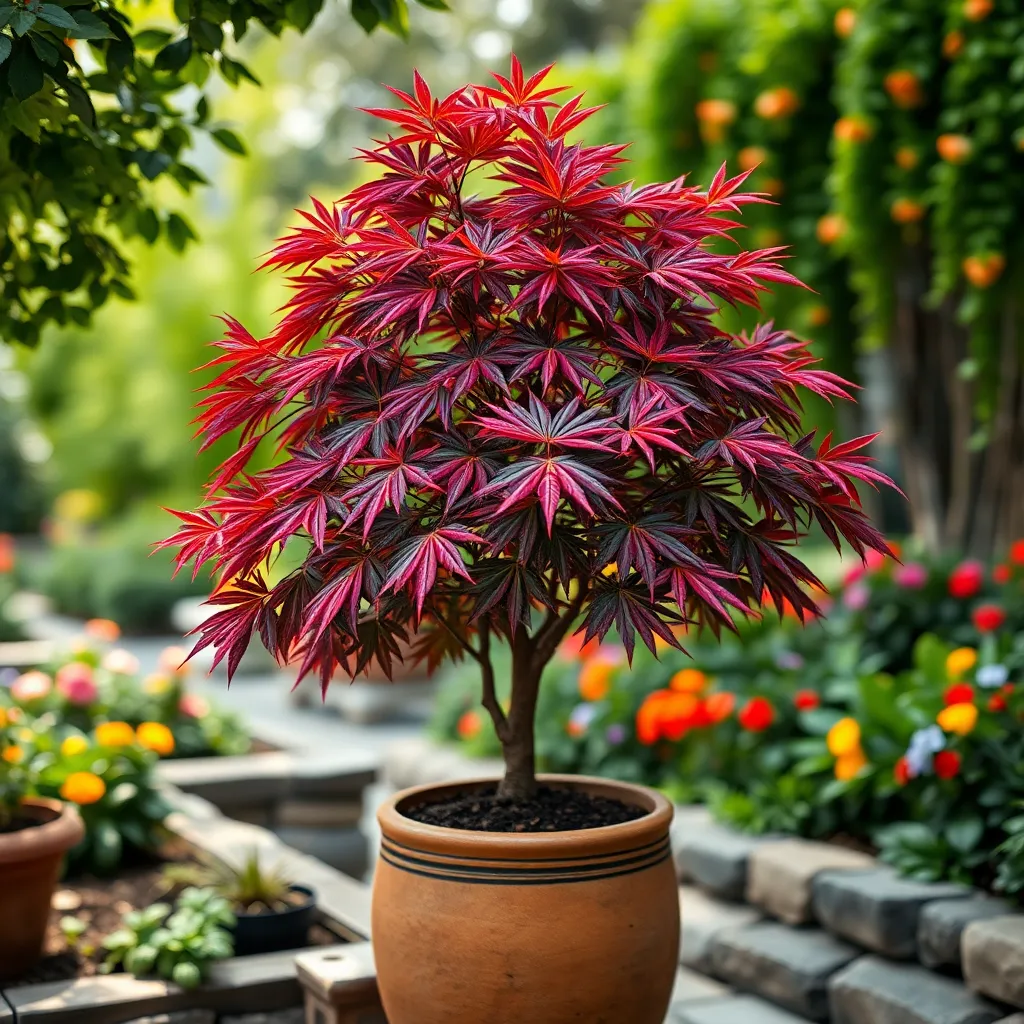
Japanese Maples are renowned for their graceful foliage and striking colors, making them an excellent choice for outdoor containers. When selecting a container, ensure it is large enough to accommodate the tree’s root system, promoting healthy growth and stability.
Position your Japanese Maple in a location with partial shade to protect its delicate leaves from scorching sun, which is crucial for vibrant foliage. Use a well-draining potting mix enriched with organic matter to provide the necessary nutrients and ensure proper drainage.
Water the Japanese Maple consistently, keeping the soil moist but not waterlogged, especially during dry spells. To maintain humidity and cool the soil, consider applying a layer of organic mulch around the base, which also helps retain moisture and suppress weeds.
For the enthusiastic gardener looking to enhance their plant’s beauty, consider pruning in late winter or early spring to shape the tree and remove any dead or crossing branches. Fertilize in early spring with a balanced, slow-release fertilizer to support healthy growth and vibrant foliage throughout the growing season.
Lavender (Fragrant Pollinator Magnet)
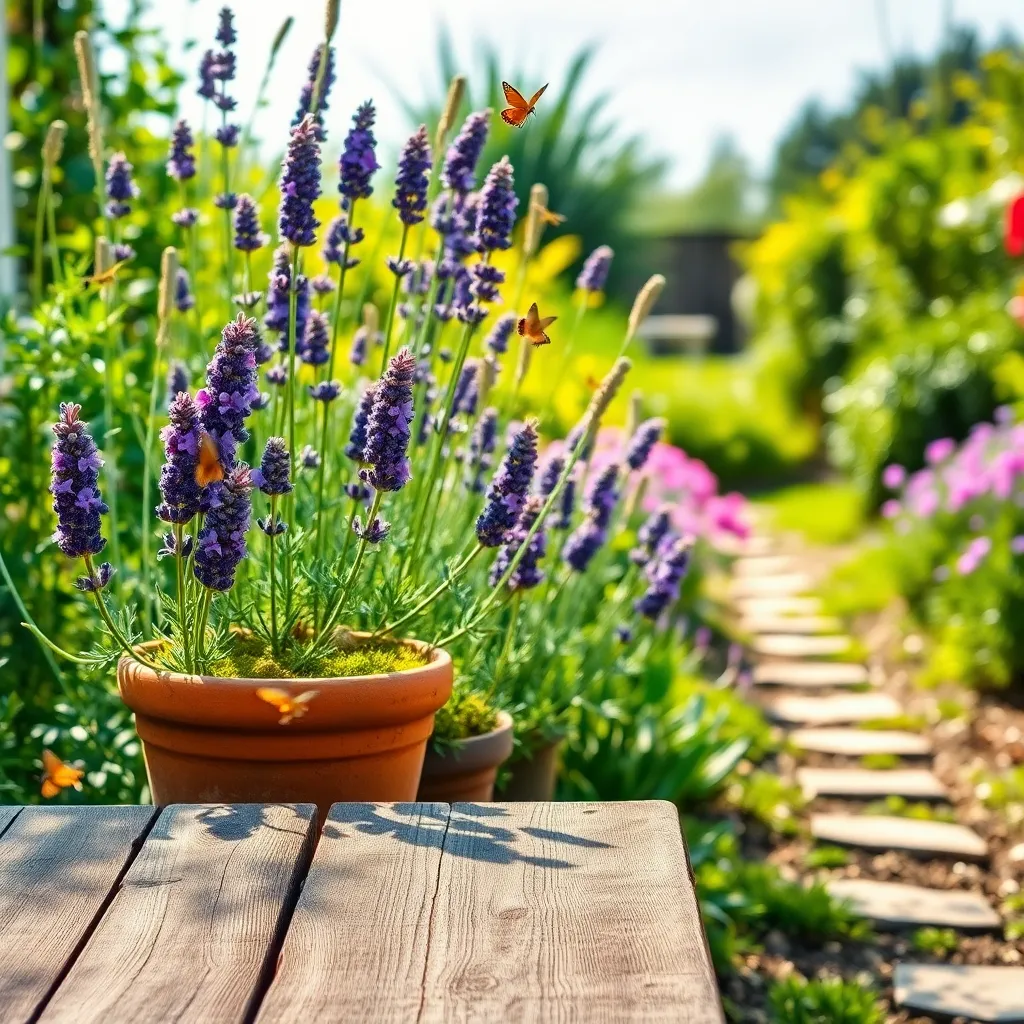
Lavender is not only a visual delight but also a fragrant pollinator magnet that thrives in outdoor containers. To grow lavender successfully, ensure your container has excellent drainage and is filled with a well-draining potting mix, such as one enriched with sand or perlite.
Position your lavender container in a location that receives at least six to eight hours of direct sunlight per day. This sun-loving plant thrives best in full sun, which helps intensify its fragrance and encourages more prolific blooming.
Water your lavender sparingly, allowing the soil to dry out between waterings to prevent root rot. A simple test is to insert your finger into the soil; if the top inch feels dry, it’s time to water.
For those looking for advanced care tips, consider pruning your lavender in early spring to remove dead growth and shape the plant. This encourages a compact growth habit and enhances flowering, making your container an even more attractive spot for bees and butterflies.
Boxwood (Evergreen Structural Elegance)
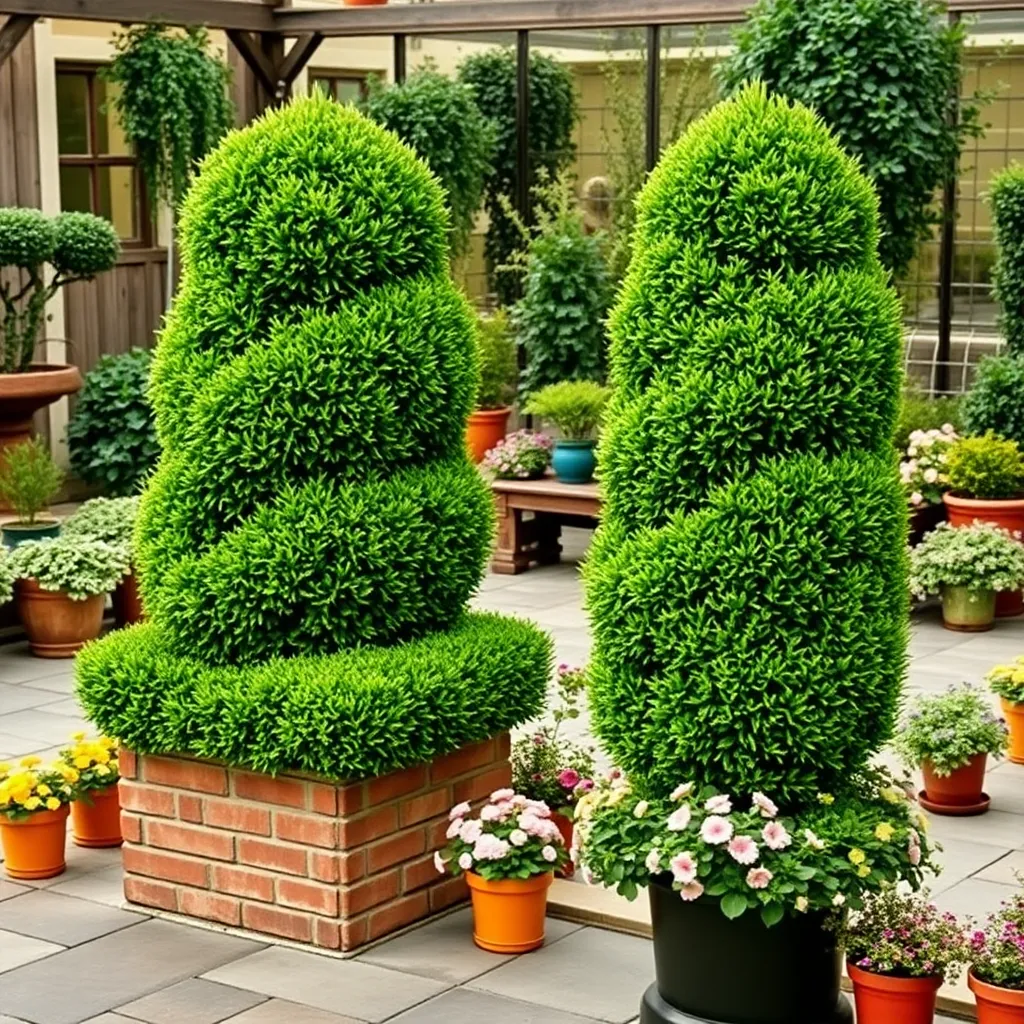
Boxwood offers evergreen elegance, making it an excellent choice for outdoor containers. Its dense foliage can be shaped into neat spheres, cones, or other topiary forms, providing a classic look that suits any garden style.
When planting boxwood in containers, use a well-draining potting mix to prevent root rot. A mix containing peat moss, pine bark, and perlite works well, as it retains moisture while allowing excess water to escape.
Boxwoods prefer a location with partial shade, avoiding harsh midday sun, which can scorch the leaves. Water them consistently, ensuring the soil remains moist but not soggy, especially during the growing season.
For those in colder regions, consider using a slow-release fertilizer in early spring to support healthy growth and maintain vibrant foliage. Pruning can be done in late spring to shape the plant and encourage a denser structure, enhancing its architectural appeal in your garden.
Begonias (Colorful Shade Lovers)
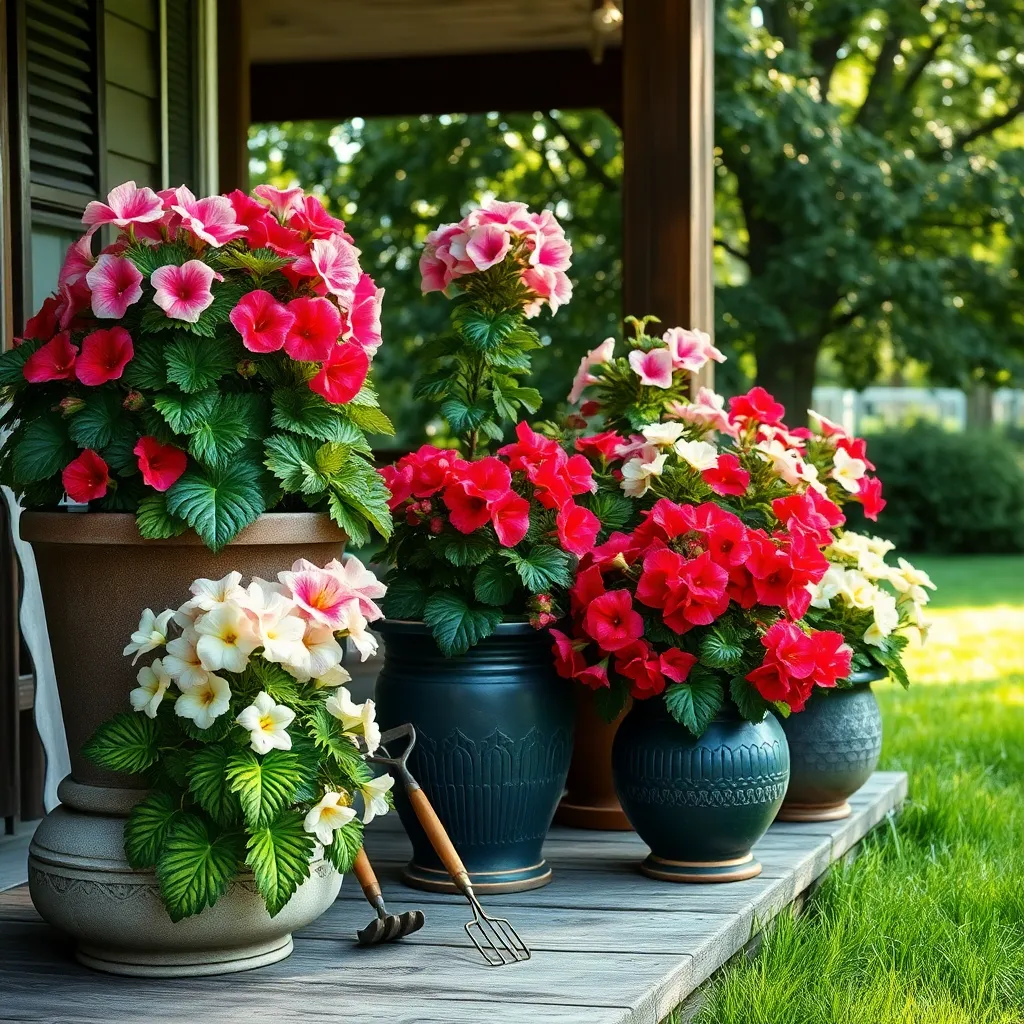
Begonias are an excellent choice for gardeners looking to add vibrant color to shaded areas. Known for their stunning blooms and lush foliage, begonias thrive in environments where they receive filtered sunlight or partial shade.
To ensure your begonias flourish, plant them in a well-draining potting mix rich in organic matter. Avoid waterlogged soil, as begonias are susceptible to root rot; instead, water them moderately and allow the top inch of soil to dry out between waterings.
For beginners, begonias are relatively low-maintenance, but they do benefit from regular feeding. Use a balanced, water-soluble fertilizer every two weeks during the growing season to encourage lush growth and abundant flowering.
Experienced gardeners can experiment with different varieties, such as the tuberous or wax begonia, to achieve diverse textures and colors. Pinch back the stem tips to promote bushier plants, and deadhead spent blooms to extend the flowering period.
Herbs Mix (Culinary Container Garden)
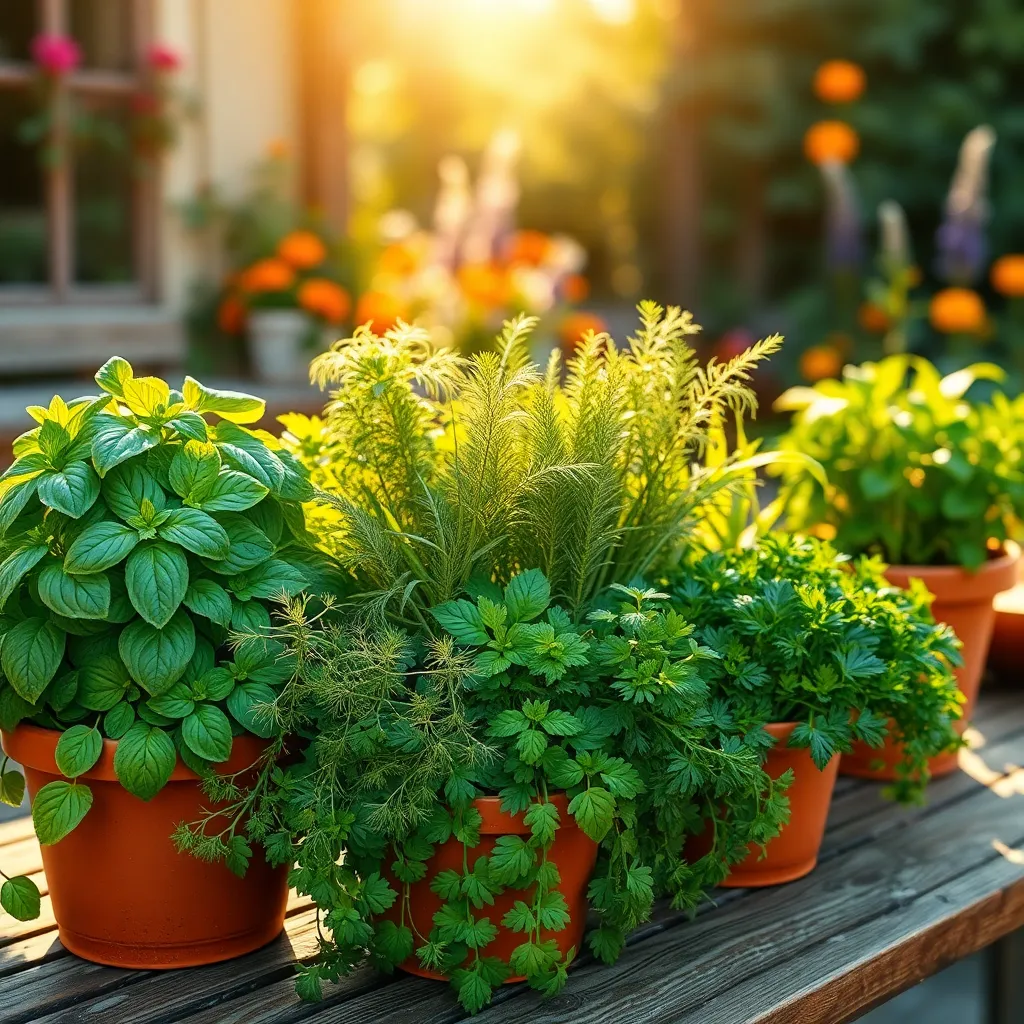
Creating a culinary herb container garden is an excellent way to enjoy fresh flavors right at your doorstep. Choose a container with good drainage, and fill it with a high-quality potting mix that retains moisture but drains well.
Herbs thrive with consistent watering, so aim to keep the soil evenly moist but not waterlogged. Most culinary herbs, such as basil, rosemary, and thyme, prefer at least six hours of sunlight per day, making a sunny spot ideal for your container.
When starting your herb garden, consider planting a mix of annuals and perennials for continuous harvests. Annual herbs like basil will need to be replanted each year, while perennials like rosemary and sage can thrive for several seasons with proper care.
To maximize your herb yields, practice regular harvesting by snipping leaves or stems, which encourages the plant to grow bushier and produce more. Pinching back flowers is crucial for herbs like basil and mint, as it keeps the plants focused on producing leaves rather than seeds.
Fountain Grass (Dynamic Vertical Element)
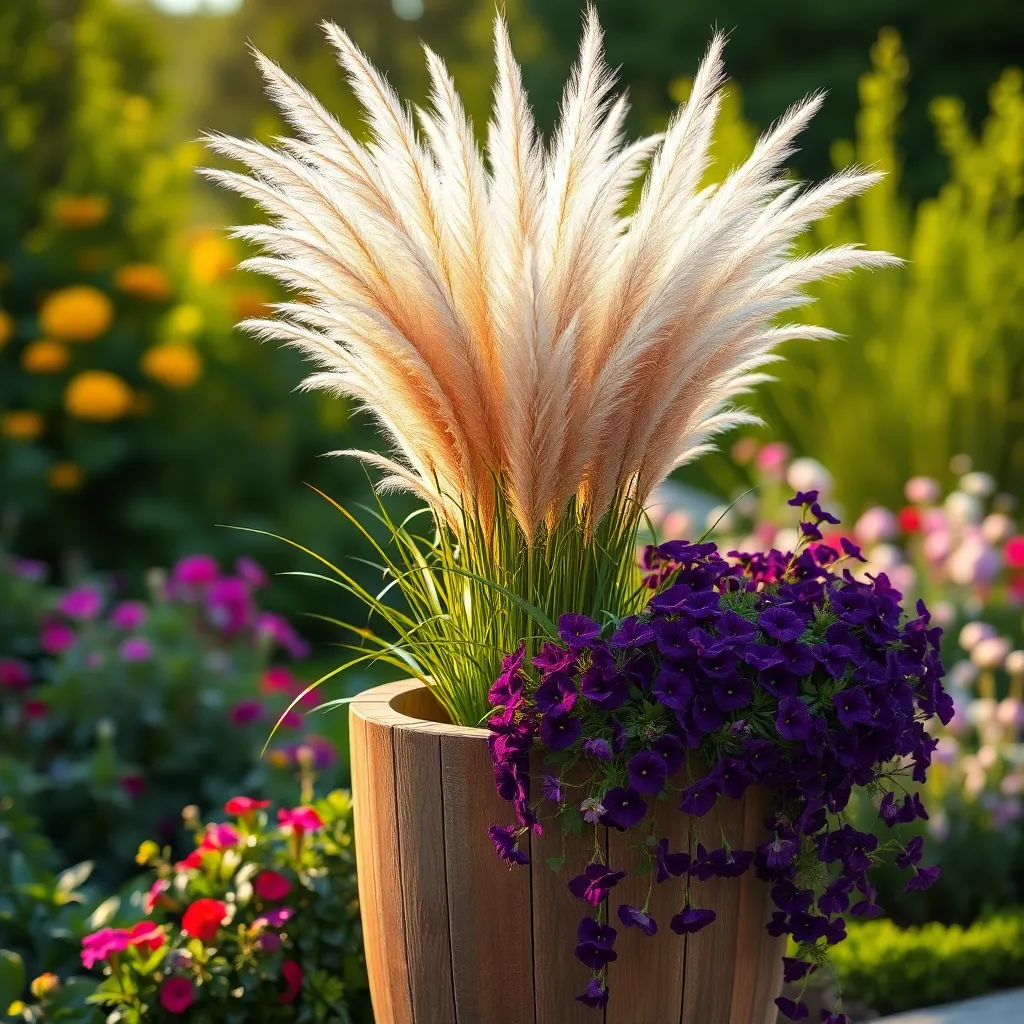
Fountain grass is a stunning choice for outdoor containers, providing a dynamic vertical element that can enhance any garden space. Its graceful, arching foliage and fluffy flower spikes add texture and movement, making it an excellent choice for both beginners and experienced gardeners.
To grow fountain grass successfully, choose a container with good drainage and fill it with a well-draining potting mix. This plant thrives in full sun, so place your container in a location that receives at least 6 hours of direct sunlight each day.
Water fountain grass regularly, allowing the top inch of soil to dry out between waterings. During the growing season, consider applying a balanced, slow-release fertilizer to support its vigorous growth and maintain lush foliage.
For those looking to experiment, try mixing fountain grass with other plants to create a stunning contrast of textures and colors. Keep in mind that fountain grass can be cut back in late winter to early spring to encourage fresh growth for the new season, providing a beautiful display year-round.
Petunias (Vibrant Sun-Loving Blooms)
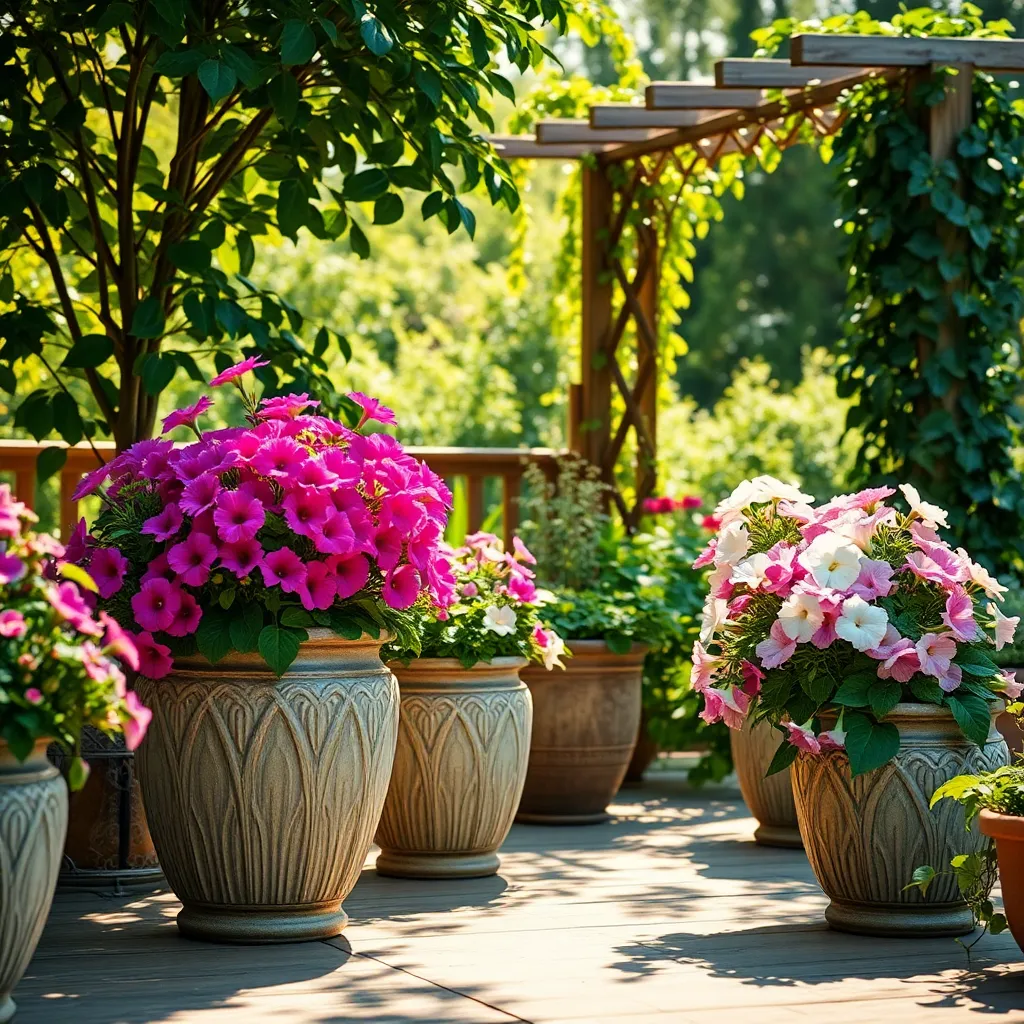
Petunias are a vibrant choice for outdoor containers, offering a stunning array of colors that thrive in sunny environments. These hardy annuals are perfect for gardeners looking to add a splash of color to their patios or balconies.
To ensure your petunias flourish, place them in an area that receives at least six hours of direct sunlight each day. Full sun exposure is crucial for promoting abundant blooms and healthy growth.
When planting petunias in containers, use a high-quality potting mix that drains well. Incorporate perlite or coarse sand to improve drainage and prevent root rot, which can occur in overly saturated soil.
Water your petunias thoroughly but let the soil dry out slightly between waterings. This encourages deeper root growth and prevents waterlogged conditions that can harm the plants.
For optimal growth, feed your petunias every two weeks with a balanced, water-soluble fertilizer. This regular feeding schedule helps maintain their vibrant blooms and lush foliage throughout the growing season.
Advanced gardeners can experiment with pinching back the stems of petunias to encourage bushier growth. Simply remove the top inch of growth from each stem, which will prompt the plant to produce more branches and flowers.
Succulent Assortment (Low-Maintenance Beauty)
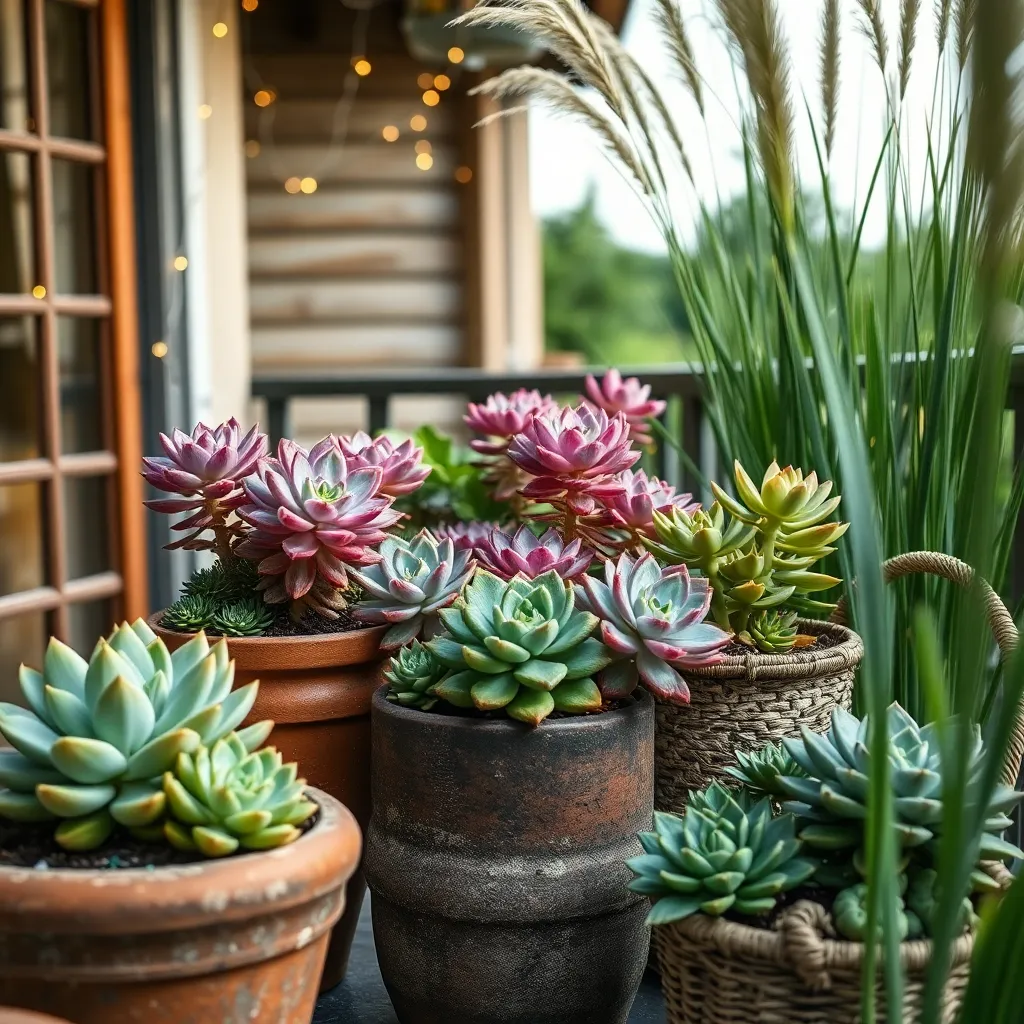
Succulents are a fantastic choice for outdoor containers, offering a variety of shapes and colors that add visual interest to any garden. These low-maintenance plants thrive in well-draining soil, making them perfect for busy gardeners who want beauty without the hassle.
To ensure your succulents flourish, use a cactus or succulent potting mix that provides excellent drainage. Water them sparingly—let the soil dry out completely between waterings to prevent root rot, especially during cooler months.
For optimal growth, place your succulents in a location where they can receive at least six hours of sunlight per day. If you notice your plants stretching towards the light, consider moving them to a sunnier spot to maintain their compact form.
Advanced gardeners might experiment with creating a miniature succulent garden in a large container, combining various species for an eye-catching display. Be mindful of the different watering needs if mixing succulents with other plant types, and adjust care routines accordingly.
Fuchsia (Trailing Color Explosion)
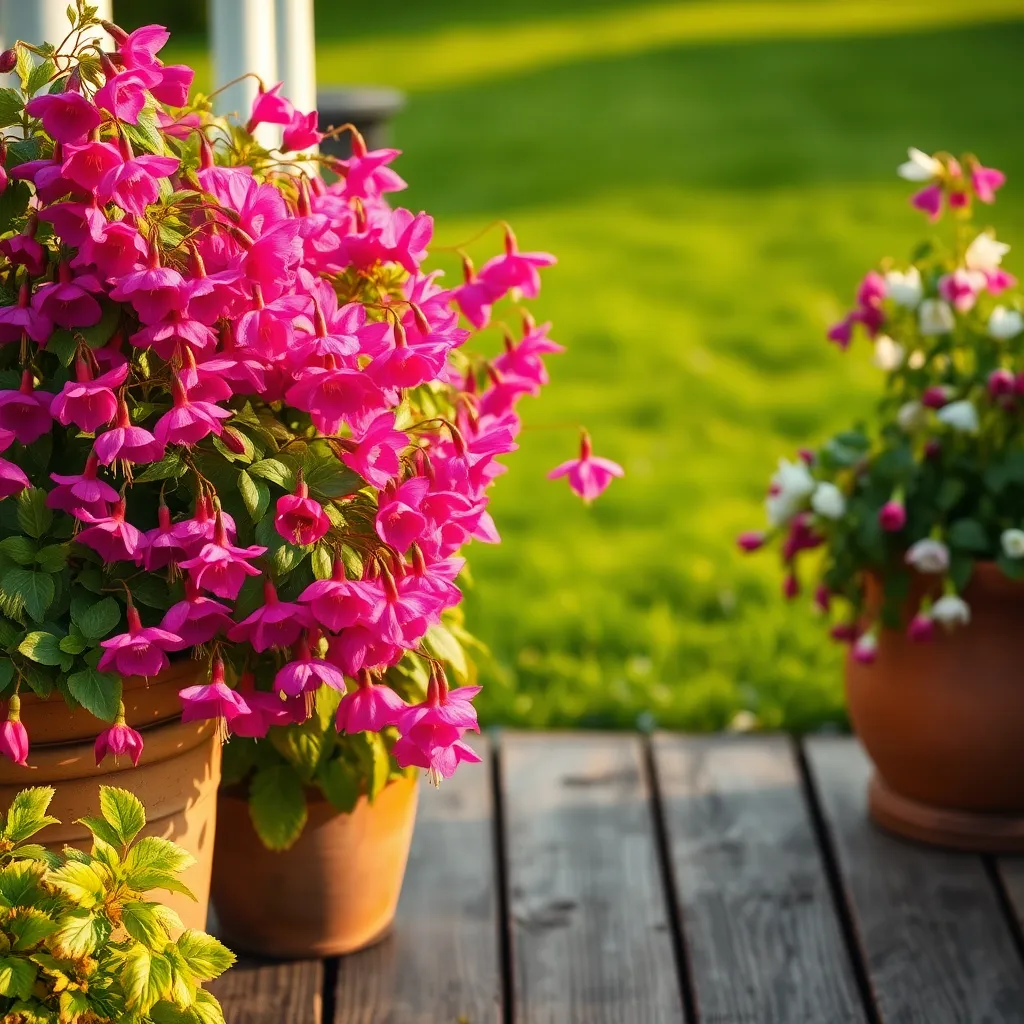
Fuchsias are renowned for their vibrant blooms and trailing habit, making them ideal for outdoor containers. These stunning plants thrive in partial shade, where they can enjoy morning sun but are protected from the intense afternoon heat.
When planting fuchsias in containers, use a high-quality potting mix that retains moisture yet drains well. An important tip is to ensure your container has adequate drainage holes to prevent waterlogging, which can lead to root rot.
Regular watering is crucial for fuchsias, especially during hot weather, as they prefer consistently moist soil. However, avoid letting the soil become soggy; aim for a balance by allowing the top inch to dry out slightly between waterings.
To keep fuchsias blooming profusely, feed them every two weeks with a balanced liquid fertilizer during the growing season. For advanced gardeners, consider pinching back the stems in early spring to encourage bushier growth and a more abundant display of flowers.
Conclusion: Growing Success with These Plants
In exploring the top 10 plants for outdoor containers, we’ve delved into important relationship concepts such as adaptability, diversity, nurturing, patience, resilience, communication, balance, attention, growth, and thriving in different environments. Just like choosing the right plant for your outdoor space, cultivating a flourishing relationship requires understanding these elements and applying them with care and consideration.
As an immediate next step, take a moment to identify one of these concepts that resonates most with your current relationship. Discuss with your partner how you can integrate this concept into your daily interactions, nurturing your bond to grow even stronger.
To ensure these insights remain at your fingertips, be sure to save or bookmark this article. Having quick access to these foundational principles can serve as a handy guide whenever you need a little relationship boost.
Looking forward, remember that with each thoughtful action, you’re investing in a future of mutual growth and happiness. Embrace the journey with confidence, knowing that by nurturing your relationship like a well-tended garden, you’re laying the groundwork for lasting success.

